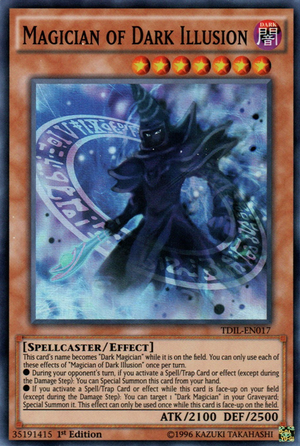- Back to Home »
- ARTICLES »
- Tips for Constructing a Good Side Deck
Posted by : Unknown
Jun 29, 2010
If you want to win your Duels, a strong Main Deck is definitely important – but so is a powerful Side Deck! Becoming a good Deck builder is one thing, but creating a great Side Deck and putting it to use is a totally different process: few Duelists get it right.
Luckily, Side Decking doesn’t have to be hard. I’ll show you 6 steps to successful Side Decking, so all you have to do is follow along and fill in the blanks. We’ll cover the first half of the process today, and then finish up later in the week. Let’s look at the first 3 steps to get you on your way.
Step 1 – Deciding What To Side Against
Before you even start thinking about which cards to use, you need to consider the Decks you want to Side Deck against – which matchups you’ll want to Side cards for. Your Side Deck can have up to 15 cards, so most Duelists choose 4 or 5 different Decks when they build their Side. Which Decks should make your hit list? Ask yourself the following:
-What Decks do you play against the most?
-What Decks are the hardest to play against?
-What new Decks do you think you might see the next time you Duel?
You should be able to answer those three questions and find 4 or 5 matchups to prepare for. Once you’ve decided what to Side Deck for, you’re done with Step 1.
Step 2 – How Many Cards To Side For Each Matchup?
Usually, figuring out which Decks to Side for is easy. But actually deciding how to divide your 15 Side Deck slots amongst those 4 or 5 Decks is trickier. You probably don’t want to just pack 3 cards each for 5 different Decks – you could wind up having more cards than you need for 1 matchup, and then not have enough cards for others. Here are some guidelines that can help you decide how many cards to Side for each matchup:
-If a frequent matchup is tough for you, you should probably Side 4-5 cards to help you beat that Deck.
-If a frequent matchup is good for you, then devoting just 2 cards in your Side Deck is probably enough.
-The more you expect to play against a Deck, the more important it is to have multiple cards for that matchup. If a Deck is really good against your strategy, but almost nobody plays it, you shouldn’t let it eat too much space in your Side Deck.
If you devote too much room in your Side to stopping one Deck, you may cost yourself options in other matchups. Also, keep in mind that your Main Deck has a lot of important cards you can’t Side Deck out – most Decks will have a hard time rotating out more than 4 or 5 cards – so siding more than 5 cards for one matchup might not be useful.
Remember, even if your Deck is great in 1 particular matchup, you shouldn’t ignore it when you build your Side Deck. A lot of Duelists make that mistake, but any matchup can always be better if you rotate in a couple different cards, no matter how good it was to begin with. SHONEN JUMP Championship and Regional Qualifier winners never ignore a matchup that they expect to play.
Step 3 – Deciding What To Side In
Okay – so you’ve decided on the 4 or 5 Decks you want to Side Deck against, and you’ve got a rough idea of how many cards you want for each. Now comes the fun part: actually deciding which cards you want to Side Deck in.
There are dozens of Decks that you might want to Side Deck against.. Since this is about building your skills from the ground up so you can make your own decisions, I won’t go and list them all. Instead, I’ll help you learn how to identify a potential card for your Side Deck. Here are some good things to look for in potential Side Deck cards:
-Cards that eliminate problems are usually better than cards that delay problems. For instance, let’s look at 2 similar monster cards you could Side Deck against Gladiator Beasts:
“Both of these monsters can be Set and survive a Gladiator Beast attack. They’ll both stop the attacking Gladiator from Special Summoning another Gladiator, too.”
Legendary Jujitsu Master and G.B. Hunter do similar things, but there’s one big difference:G.B. Hunter leaves your opponent’s Gladiator Beast on the field, while Jujitsu Master sends it back to the Deck. Jujitsu Master has lower DEF, but it eliminates the threat. G.B. Hunter only delays the threat: once your opponent destroys G.B. Hunter he’ll attack again with the Gladiator Beast you blocked.
-Some cards can be rotated in against many different Decks. Since they let you cover several matchups without taking up extra space, these cards can be hugely valuable to your Side Deck.
“Here are 3 cards that can help in several different matchups.”
-Consistency is important, but drawing too many Sided cards that do the same thing can hurt you. If you Side Deck 4 or 5 cards for one matchup, make sure that the cards you Side attack your opponent’s strategy in a couple different ways. If you’re only prepared to stop one part of your opponent’s strategy, they could still beat you with all the other parts.
With these 3 steps, you can build yourself a killer Side Deck to take on the top Decks you expect to face. But that’s only half the challenge – actually using your Side Deck is the most important part of the equation. Join us next time, and we’ll show you how to put that Side Deck to work!
Powered by Blogger.





















